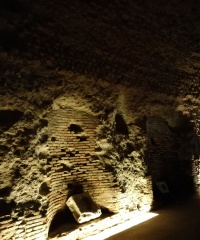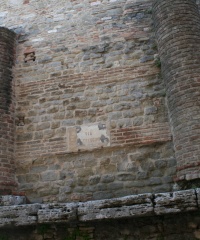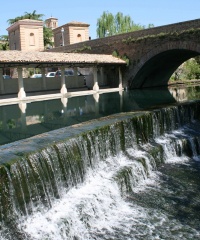The frigidarium remains of the thermal complex, formed by mosaic-decorated niches with black and white tesserae. Recent restorations have revealed traces of the calidarium. The beautiful mosaic, from the 2nd century A.C., of exquisite and refined…
Heart of the city and fulcrum of its development in the Middle Ages, the square, whose structure dates back to the XII – XIII centuries, constitutes one of the most evocative and outstanding architectural bodies among the Umbrian cities,…
The most significant buildings and palaces of Bevagna are along Corso Matteotti, formerly Via Flaminia, among which we point out the Palazzo Lepri, Municipality until 1997, designed by the architect Andrea Vici at the end of the 18th century. The…
The houses, built above the Roman remains, follow the curvatures of a large theater that leaned on the slope of the hill and overlooked the Via Flaminia. Inside the private houses, the conspicuous and significant remains of two ambulatories that…
Bevagna is surrounded by rivers: The Clitunno, which pours into the Teverone taking the name of Timia. The Clitunno, just before pouring in Teverone creates the Accolta, the old wash house, and a nice waterfall which is admired by many tourists.
Seat of the homonymous judiciary of the city, of which we have news since 1187, the palace looks to the square with an elegant façade in travertine and sandstone, alternated by a double order of Gothic mullioned windows, and with a wide loggia…









